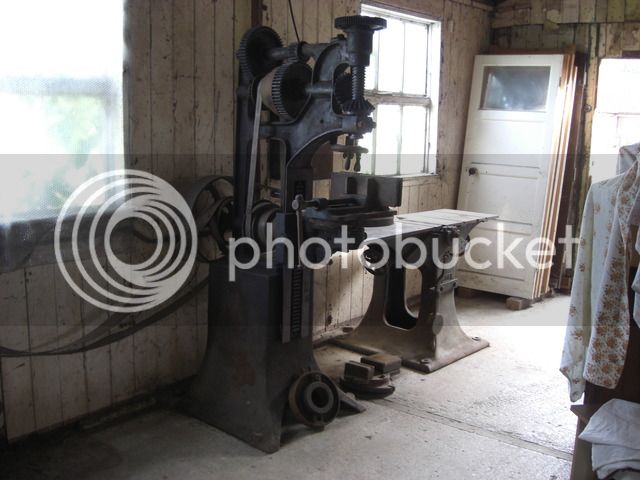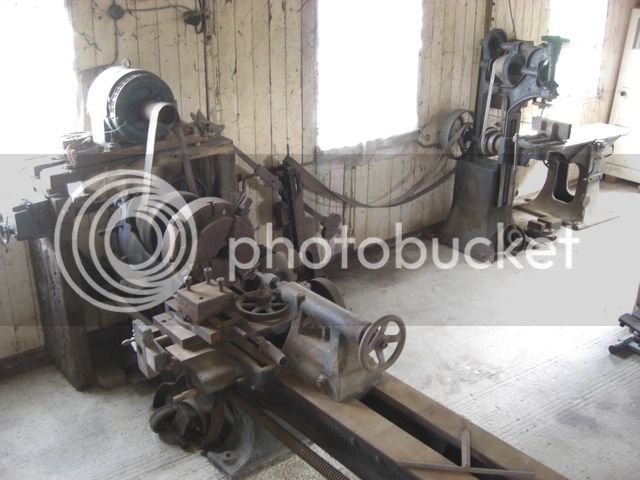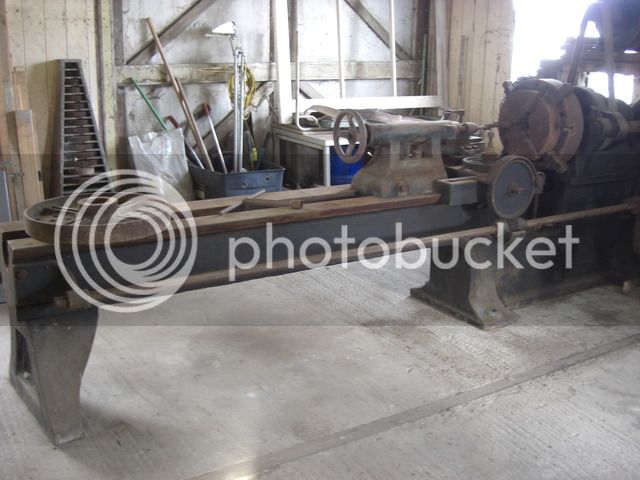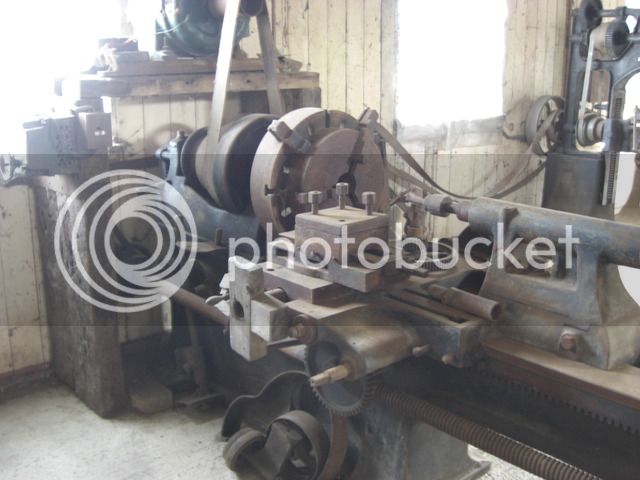Hi,
Forgive me as this is my first post on this forum and although my Father was a carpenter/lecturer by trade, I have no woodworking skills whatsoever. I'll try to be as brief as I can regarding my issue so I don't bore you all to death.
My Father passed away three years ago. In the late 70's he bought a Garden Nursery in Lincolnshire with a view to obtaining planning permission to build a house on site and run the nursery as a retirement project. It took nearly 20 years of fighting objections and going through various appeals before he achieved what he set out to do i.e. build a property. Unfortunately, by the time that happened, the nursery had fallen into a right state, because my parent's lived 45 miles away and couldn't afford to keep travelling to maintain it.
There are various workshops on site, one of which contains a huge lathe, a mortice machine and a planer, all belt driven.
The planer is easily identifiable as having been manufactured by a company called T Robinson & Son of Rochdale. It has what I believe to be a model number on its side i.e. 606
The lathe and mortice machines have no identity at all, from what I can see with the naked eye. I would have thought they'd have an ID plate somewhere but I've been down on my hands, knees and bumpsy daisy all to no avail.
The machines were belt driven by a 3-phase electrical supply. They have not been used in anger since the late 70's but they turn very easily.
Is there anyone out there who has some expertise in this type of machinery who could possibly help me to identify them?
My mother passed away earlier this year and we're in the process of preparing the parental home for the open market. In doing so, we would like to sell these machines on to someone who could make use of and look after them, rather than see them sold for scrap. They are far too valuable as peices of British Social History for that I'm sure.
I have tried to attach a few photographs but not been successful, but please pm me for images to be sent personally if you can possibly help.
Many thanks.
Forgive me as this is my first post on this forum and although my Father was a carpenter/lecturer by trade, I have no woodworking skills whatsoever. I'll try to be as brief as I can regarding my issue so I don't bore you all to death.
My Father passed away three years ago. In the late 70's he bought a Garden Nursery in Lincolnshire with a view to obtaining planning permission to build a house on site and run the nursery as a retirement project. It took nearly 20 years of fighting objections and going through various appeals before he achieved what he set out to do i.e. build a property. Unfortunately, by the time that happened, the nursery had fallen into a right state, because my parent's lived 45 miles away and couldn't afford to keep travelling to maintain it.
There are various workshops on site, one of which contains a huge lathe, a mortice machine and a planer, all belt driven.
The planer is easily identifiable as having been manufactured by a company called T Robinson & Son of Rochdale. It has what I believe to be a model number on its side i.e. 606
The lathe and mortice machines have no identity at all, from what I can see with the naked eye. I would have thought they'd have an ID plate somewhere but I've been down on my hands, knees and bumpsy daisy all to no avail.
The machines were belt driven by a 3-phase electrical supply. They have not been used in anger since the late 70's but they turn very easily.
Is there anyone out there who has some expertise in this type of machinery who could possibly help me to identify them?
My mother passed away earlier this year and we're in the process of preparing the parental home for the open market. In doing so, we would like to sell these machines on to someone who could make use of and look after them, rather than see them sold for scrap. They are far too valuable as peices of British Social History for that I'm sure.
I have tried to attach a few photographs but not been successful, but please pm me for images to be sent personally if you can possibly help.
Many thanks.




































